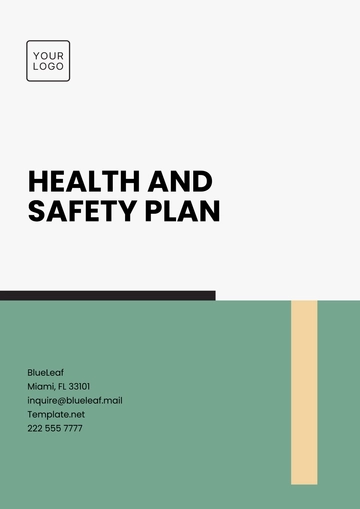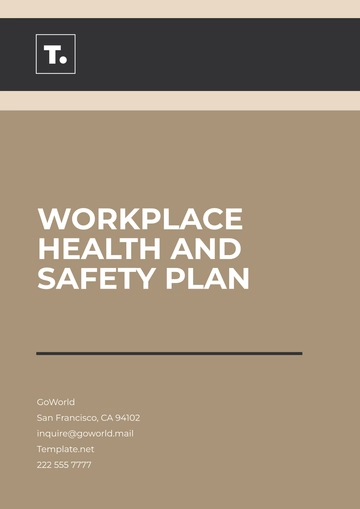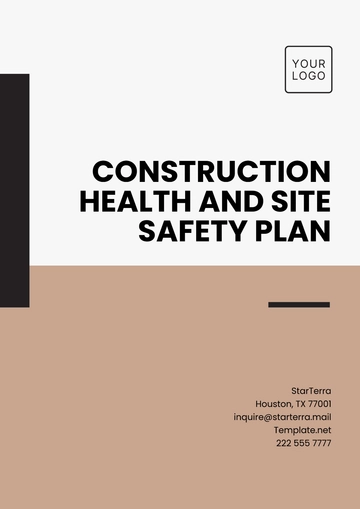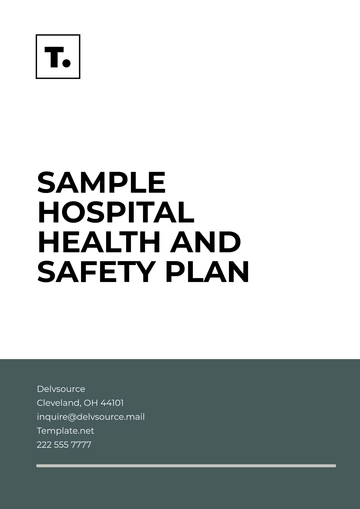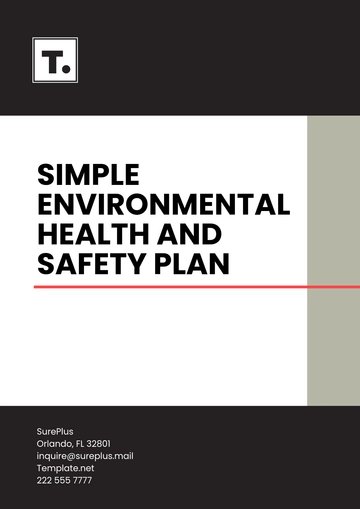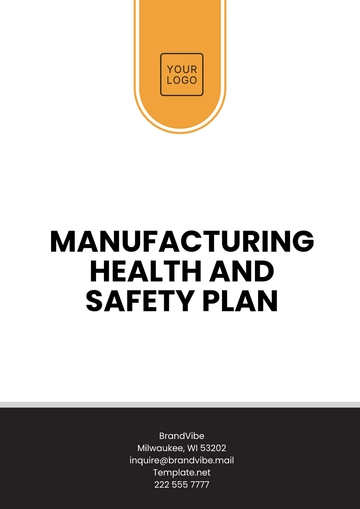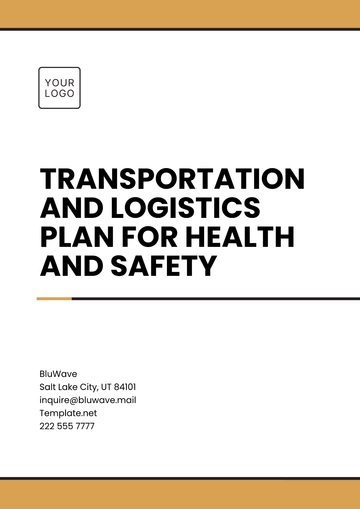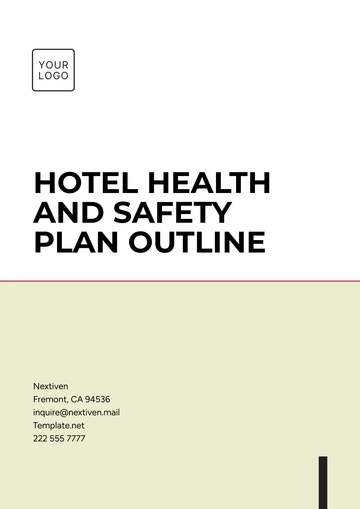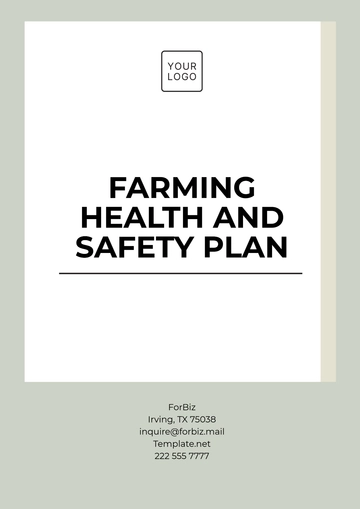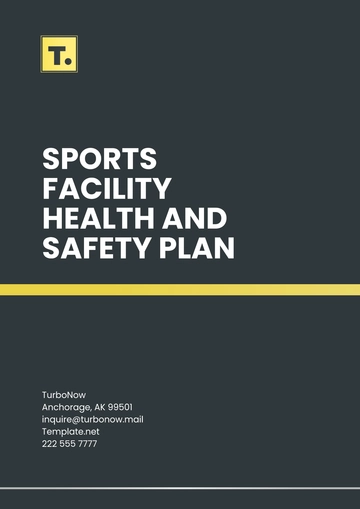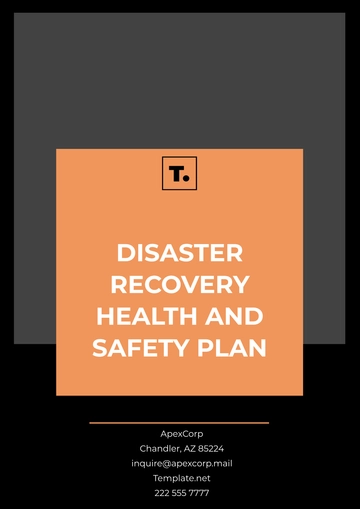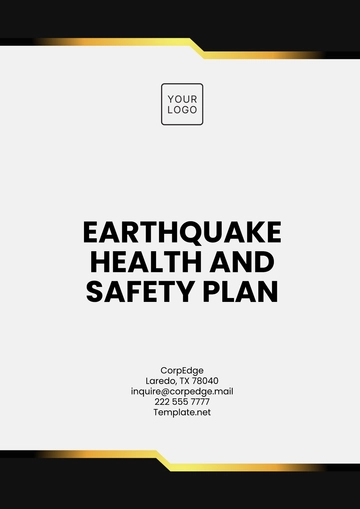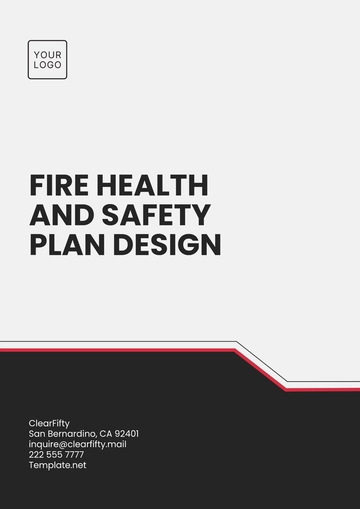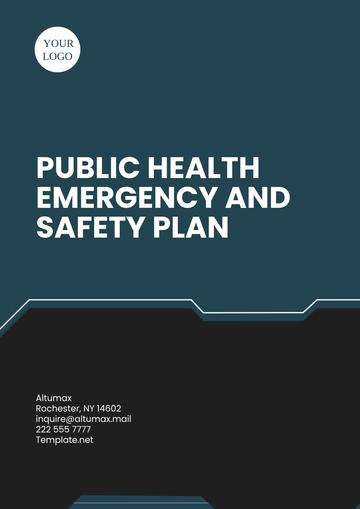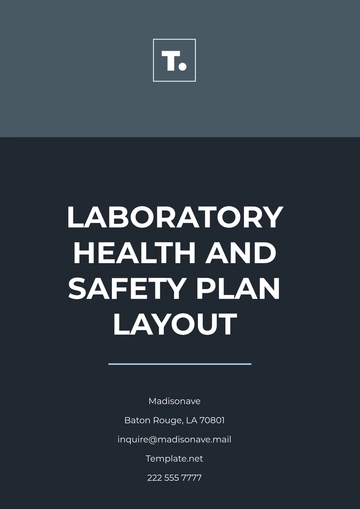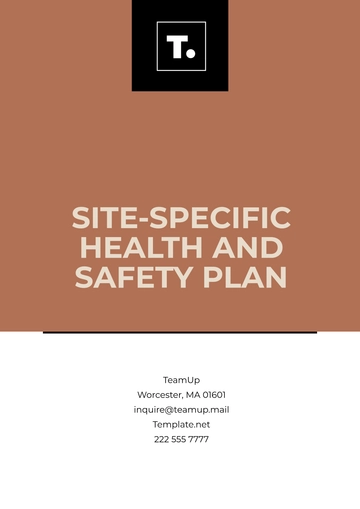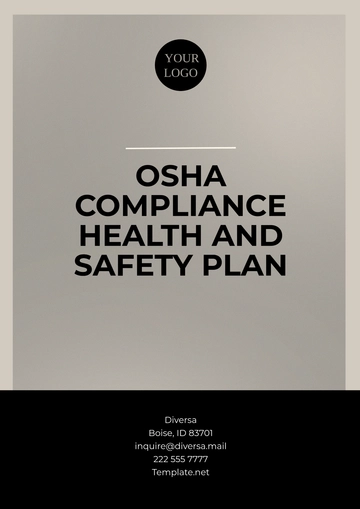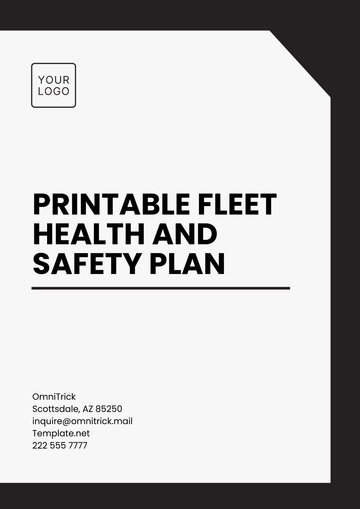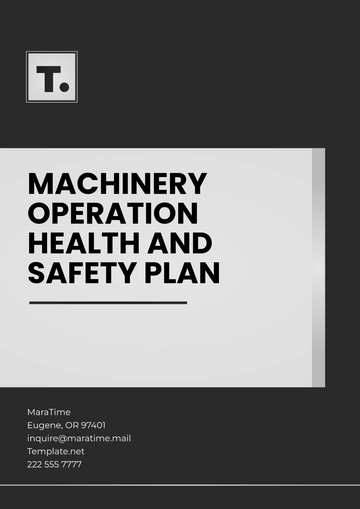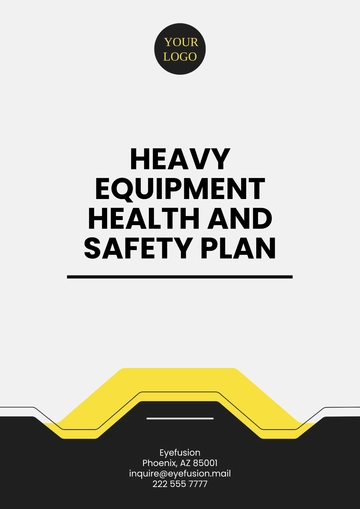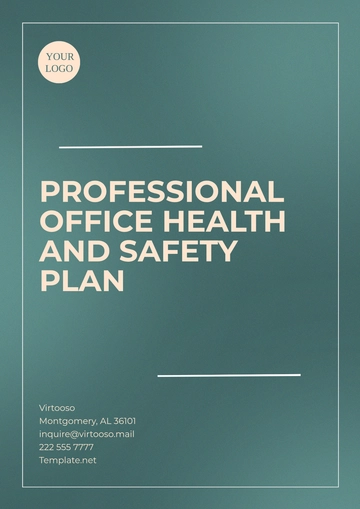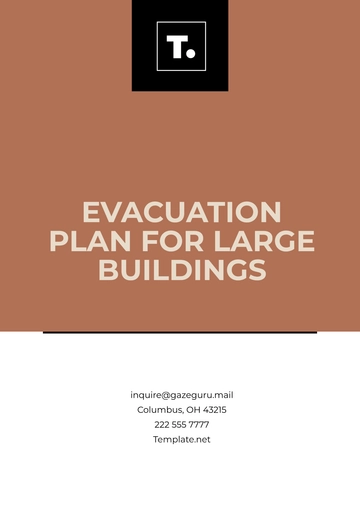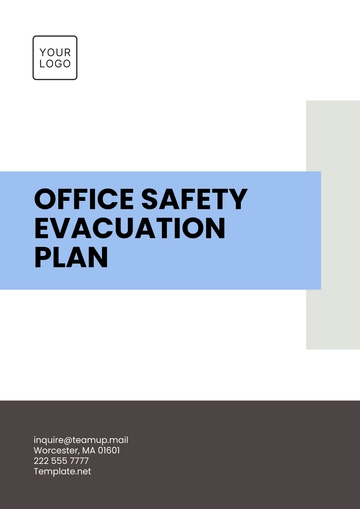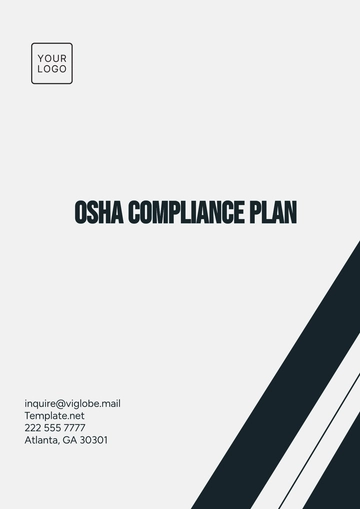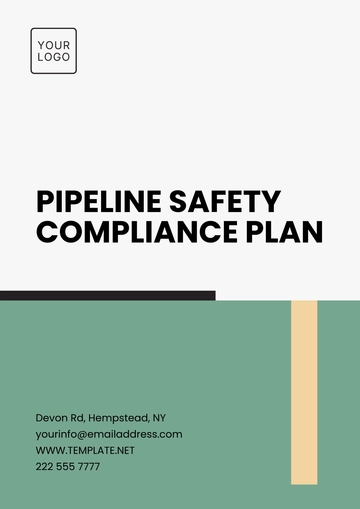Free Safety Plan
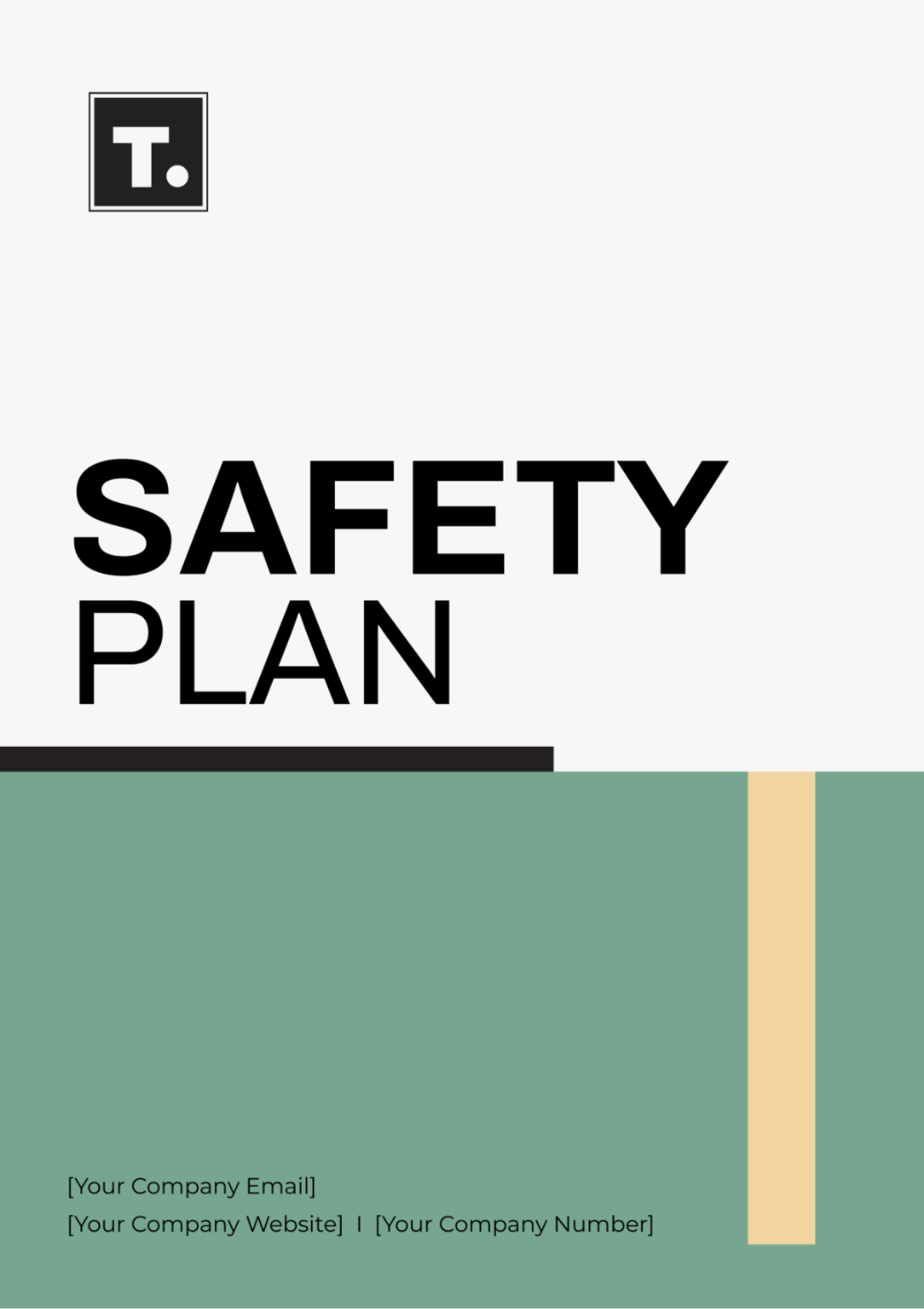
Written by: [Your Name]
Contact Number: [Your Company Number]
I. Introduction to Safety Plan
Welcome to the Safety Plan for [Your Company Name]. This comprehensive plan is designed to ensure the safety and security of all individuals within our premises. It outlines procedures and measures to prevent accidents, respond effectively to emergencies, promote safety awareness, and ensure compliance with safety regulations and standards.
II. Purpose of the Safety Plan
The Safety Plan serves several key purposes:
Prevention of Accidents and Injuries: By identifying and mitigating workplace hazards, we aim to prevent accidents and injuries among our employees, customers, and visitors.
Effective Emergency Response: The plan provides clear procedures for responding to various emergencies, ensuring the safety and well-being of all individuals within our premises.
Promotion of Safety Awareness: Through education, training, and communication initiatives, we strive to foster a culture of safety awareness among our workforce.
Compliance with Regulations: We are committed to complying with all relevant safety regulations and standards to uphold legal obligations and ensure best practices in safety management.
III. Issuers and Users of the Safety Plan
A. Issuers
Safety Plans are issued by:
Organizations
Safety Officers
Regulatory Bodies
B. Users/Recipients
Safety Plans are used by:
Employees
Management Teams
Safety Personnel
IV. Common Use Cases
Safety Plans are commonly used for:
Workplace Safety: Ensuring the safety of employees, customers, and visitors within the workplace environment.
Emergency Preparedness: Outlining procedures for responding to emergencies such as fires, medical incidents, or natural disasters.
Compliance with Safety Regulations: Ensuring adherence to safety regulations and standards set by regulatory bodies.
V. Responsibilities and Roles
A. Management Responsibilities
The management team, led by the Safety Officer, holds the following responsibilities:
Overseeing the implementation of safety measures outlined in the plan.
Providing resources and support for safety initiatives.
Ensuring compliance with safety regulations and standards.
B. Employee Responsibilities
All employees are responsible for:
Familiarizing themselves with safety procedures outlined in the plan.
Reporting hazards or safety concerns promptly to the designated Safety Officer.
Participating actively in safety training sessions and drills.
VI. Emergency Procedures
A. Emergency Contacts
Emergency Service | Contact Number |
|---|---|
Police | [Emergency Number] |
Fire Department | [Emergency Number] |
Medical Emergency | [Emergency Number] |
B. Evacuation Plan
In the event of an emergency requiring evacuation:
Remain calm and follow instructions from designated staff members.
Exit the building via the nearest emergency exit, avoiding elevators.
Assist individuals with disabilities or injuries, if safe to do so.
Assemble at the designated assembly point and await further instructions from emergency responders.
VII. Safety Training
A. Initial Training
New employees will receive comprehensive safety training covering:
Identification of workplace hazards and associated risks.
Emergency procedures, including evacuation routes and assembly points.
Proper usage of safety equipment and personal protective gear.
B. Ongoing Training
Regular safety training sessions will be conducted to:
Reinforce safety protocols and best practices.
Introduce updates to procedures based on emerging risks or incidents.
Address any safety concerns raised by employees or identified during safety audits.
VIII. Safety Equipment and Signage
A. Personal Protective Equipment (PPE)
Appropriate PPE will be provided for:
Eye protection (safety glasses or goggles).
Hearing protection (earplugs or earmuffs).
Respiratory protection (masks or respirators for hazardous environments).
B. Safety Signage
Clear and visible signage will be placed to indicate:
Hazardous areas (e.g., wet floors, high voltage zones).
Emergency exits and evacuation routes.
Locations of safety equipment such as fire extinguishers, first aid kits, and emergency showers.
IX. Review and Updates
This safety plan will be reviewed regularly to:
Ensure compliance with applicable safety regulations and standards.
Incorporate feedback from employees and safety committee members.
Address any changes in the workplace environment or operations that may impact safety procedures.
X. Conclusion
In conclusion, the Safety Plan for [Your Company Name] is a vital tool for ensuring the safety and security of everyone within our premises. Implementing the procedures and measures outlined in this plan can create a safer environment, reduce the risk of accidents and injuries, and effectively respond to emergencies. We remain committed to upholding the highest standards of safety and continuously improving our safety practices through regular reviews and updates. Thank you for being so dedicated to safety.
- 100% Customizable, free editor
- Access 1 Million+ Templates, photo’s & graphics
- Download or share as a template
- Click and replace photos, graphics, text, backgrounds
- Resize, crop, AI write & more
- Access advanced editor
Discover the ultimate Safety Plan Template on Template.net. This editable, customizable template can be tailored to your specific needs. Best of all, it's editable in our AI Tool, ensuring precision and ease in creating your safety plan.
You may also like
- Finance Plan
- Construction Plan
- Sales Plan
- Development Plan
- Career Plan
- Budget Plan
- HR Plan
- Education Plan
- Transition Plan
- Work Plan
- Training Plan
- Communication Plan
- Operation Plan
- Health And Safety Plan
- Strategy Plan
- Professional Development Plan
- Advertising Plan
- Risk Management Plan
- Restaurant Plan
- School Plan
- Nursing Home Patient Care Plan
- Nursing Care Plan
- Plan Event
- Startup Plan
- Social Media Plan
- Staffing Plan
- Annual Plan
- Content Plan
- Payment Plan
- Implementation Plan
- Hotel Plan
- Workout Plan
- Accounting Plan
- Campaign Plan
- Essay Plan
- 30 60 90 Day Plan
- Research Plan
- Recruitment Plan
- 90 Day Plan
- Quarterly Plan
- Emergency Plan
- 5 Year Plan
- Gym Plan
- Personal Plan
- IT and Software Plan
- Treatment Plan
- Real Estate Plan
- Law Firm Plan
- Healthcare Plan
- Improvement Plan
- Media Plan
- 5 Year Business Plan
- Learning Plan
- Marketing Campaign Plan
- Travel Agency Plan
- Cleaning Services Plan
- Interior Design Plan
- Performance Plan
- PR Plan
- Birth Plan
- Life Plan
- SEO Plan
- Disaster Recovery Plan
- Continuity Plan
- Launch Plan
- Legal Plan
- Behavior Plan
- Performance Improvement Plan
- Salon Plan
- Security Plan
- Security Management Plan
- Employee Development Plan
- Quality Plan
- Service Improvement Plan
- Growth Plan
- Incident Response Plan
- Basketball Plan
- Emergency Action Plan
- Product Launch Plan
- Spa Plan
- Employee Training Plan
- Data Analysis Plan
- Employee Action Plan
- Territory Plan
- Audit Plan
- Classroom Plan
- Activity Plan
- Parenting Plan
- Care Plan
- Project Execution Plan
- Exercise Plan
- Internship Plan
- Software Development Plan
- Continuous Improvement Plan
- Leave Plan
- 90 Day Sales Plan
- Advertising Agency Plan
- Employee Transition Plan
- Smart Action Plan
- Workplace Safety Plan
- Behavior Change Plan
- Contingency Plan
- Continuity of Operations Plan
- Health Plan
- Quality Control Plan
- Self Plan
- Sports Development Plan
- Change Management Plan
- Ecommerce Plan
- Personal Financial Plan
- Process Improvement Plan
- 30-60-90 Day Sales Plan
- Crisis Management Plan
- Engagement Plan
- Execution Plan
- Pandemic Plan
- Quality Assurance Plan
- Service Continuity Plan
- Agile Project Plan
- Fundraising Plan
- Job Transition Plan
- Asset Maintenance Plan
- Maintenance Plan
- Software Test Plan
- Staff Training and Development Plan
- 3 Year Plan
- Brand Activation Plan
- Release Plan
- Resource Plan
- Risk Mitigation Plan
- Teacher Plan
- 30 60 90 Day Plan for New Manager
- Food Safety Plan
- Food Truck Plan
- Hiring Plan
- Quality Management Plan
- Wellness Plan
- Behavior Intervention Plan
- Bonus Plan
- Investment Plan
- Maternity Leave Plan
- Pandemic Response Plan
- Succession Planning
- Coaching Plan
- Configuration Management Plan
- Remote Work Plan
- Self Care Plan
- Teaching Plan
- 100-Day Plan
- HACCP Plan
- Student Plan
- Sustainability Plan
- 30 60 90 Day Plan for Interview
- Access Plan
- Site Specific Safety Plan
